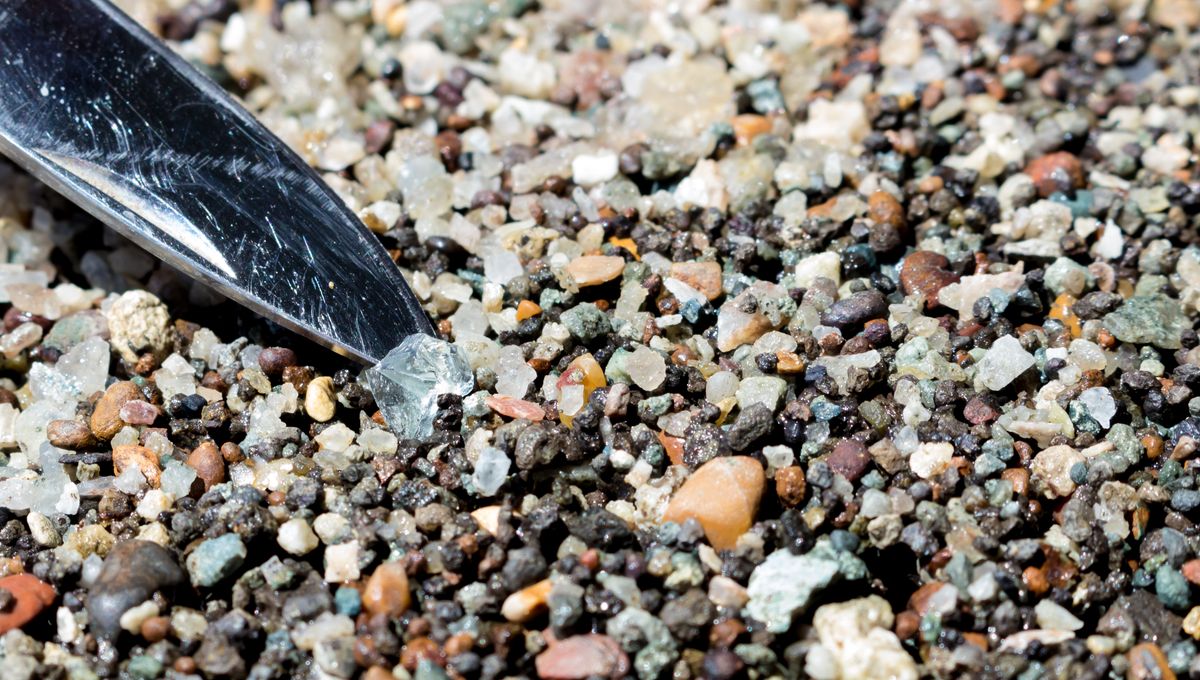
Hiking is nice and all, but wouldn’t it be better if it could be a bit more… opulent? Well, there’s one place in the world where a nice family day out can be combined with becoming richer than your wildest dreams – and it’s closer to home than you might think.
At least, assuming you’re reading this in the US – because Crater of Diamonds State Park, the “only place in the world where the public can search for real diamonds in their original volcanic source,” per the park’s website, is found just outside Murfreesboro, in southwest Arkansas.
A long history
The story of the diamonds in Crater of Diamonds begins about 100 million years ago, with a series of violent, supersonic volcanic explosions that brought magma up from deep, deep within the Earth’s mantle. The molten rock that was spewed out included a whole lot of lamproite – the standard, boring stuff that usually comes out of a volcano – as well as a whole bunch of precious stones.
“Amethyst, garnet, jasper, agate, quartz, and other rocks and minerals naturally occur here,” notes the park’s website, all of which visitors are free to keep if they find. But that’s not the headline find – that, of course, is the diamonds.
Averaging around one or two unearthed a day, the diamonds come in all different colors and sizes – though some are more common than others. “More than 35,000 diamonds have been found by park visitors since the Crater of Diamonds became an Arkansas state park in 1972,” the site explains – including the Strawn-Wagner Diamond, found in 1990 and famous for being the most perfect diamond the American Gem Society ever certified in its lab. “Graded the perfect grade of O/O/O (Ideal cut/D color/Flawless), or ‘Triple Zero,’ it is the highest grade a diamond can achieve,” the park explains. “A diamond this perfect is so rare that most jewelers and gemologists never see one during their career.”
Equally notable is the “Uncle Sam”, a 40.23-carat behemoth that is the biggest diamond ever unearthed in the US. That was discovered in the park in 1924, about 50 years before the area became a state park and was still a struggling commercial diamond mine.
That last comment might make you wonder, however: why would the Crater of Diamonds struggle if so many diamonds have been found there? Especially since, let’s face it, that’s the number found by random amateurs, not an intensive, specialized mining operation. Well, the answer may be in the quality, not the quantity of the finds there: while diamonds are plentiful in number, they average only about 0.25 carat each – about 0.05 grams, or less than one-five-hundredth of an ounce.
So why is that?
The geology of the Crater of Diamonds
The crater abounds with diamonds, but almost none are particularly large. The reason for that is partly geology and partly age. While most of the carbon in the mantle – and particularly the upper mantle, which is more, let’s say, churny than the lower part – is thought to exist in the form of carbonate minerals and diamonds, that wasn’t always the case. The eruptions that brought the world the Crater of Diamonds “took place long before upper mantle enrichment,” explains an Arkansas Geological Survey from 2008, when “carbon that was available in the rock to crystallize into diamond was not abundant.”
Because of that, and because the liquid magma was more static than it is now, those diamonds that could form were mostly stuck at a pretty small size.
“During crystallization, carbon is removed from the liquid and attached to the orderly structure of the forming diamond. The liquid surrounding a given crystal is therefore depleted in carbon,” the survey explains. “If this happens under relatively uniform conditions, like a static state, then many small diamonds form rather than a few large diamonds.”
Add that to eons of being rubbed up against dirt, other rocks, rain, wind, and everything else, and it makes for diamonds that are unlikely to make any finder a millionaire. “The material they are mixed with during their movement is corrosive to the entrained diamond crystals,” the survey notes, “so if the transport speed is not very fast, the diamonds begin to be resorbed into that material and get smaller and smaller. If transport is too slow, then they disappear, like salt crystals when dissolved in water.”
This is why the diamonds at the Crater are all so well-rounded, by the way – but it’s also why they’re small. If not for the chemically corrosive conditions they’ve had to endure on their way from the mantle to here, they would likely be 2.5 to five times the size they are today.
A gem of your own
The diamonds may be small – but let’s face it: even a small diamond is special, especially if you found it yourself. Bringing your own equipment is allowed – though industrial and motorized machines are not – or else you can simply wander round, hoping for the best.
And even that latter tactic can pay off. Only last month, 31-year-old Micherre Fox unearthed a 2.3-carat stone the size of a pea at the park, which will soon adorn her engagement ring. Given that such a gem would normally put a person back a five-figure sum even at low prices, the fact that hers came at the price of entry to a state park makes the find undoubtedly special.
“There’s something symbolic” about finding the diamond herself, Fox said in a statement at the time.
“[You can] solve problems with money, but sometimes money runs out in a marriage,” she said. “You need to be willing and able to solve those problems with hard work.”
Source Link: The Only Place On Earth Where You (Yes, You) Can Search For Diamonds – And Keep What You Find